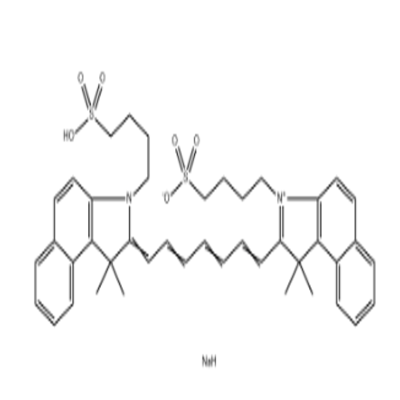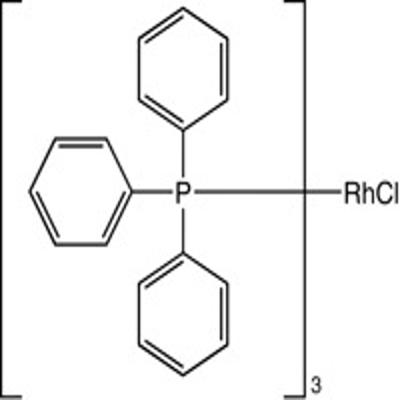-
Categories
-
Pharmaceutical Intermediates
-
Active Pharmaceutical Ingredients
-
Food Additives
- Industrial Coatings
- Agrochemicals
- Dyes and Pigments
- Surfactant
- Flavors and Fragrances
- Chemical Reagents
- Catalyst and Auxiliary
- Natural Products
- Inorganic Chemistry
-
Organic Chemistry
-
Biochemical Engineering
- Analytical Chemistry
- Cosmetic Ingredient
-
Pharmaceutical Intermediates
Promotion
ECHEMI Mall
Wholesale
Weekly Price
Exhibition
News
-
Trade Service
Using thin film freezing technology, the new method of turning biological products into powder is expected to achieve flexible delivery forms, improve efficacy and solve cold chain cost problems.
in the context of the COVID-19 pandemic, thin-film freeze-drying technology came at the right time.
Robert O. ("Bill") Is the Dean of the Department of Molecular Medicine and Delivery medicine at the University of Texas at Austin (UT-Austin) School of Pharmacy, with 49 patents in the field of delivery, process and biotechnology.
is one of his latest achievements in thin-film freeze-drying technology, which is expected to be used in large molecules, small molecules, vaccines, and plant medicines while maintaining therapeutic and cost advantages.
project was developed in collaboration with Dr. Keith P. Johnston, a professor of chemical engineering at UT-Austin, and Dow Chemical, with the aim of improving the delivery of drugs with poor water solubility.
when the project's intellectual property returned to UT-Austin, it caught the attention of Dr. Brian Windsor, an alumnus of the school and president and CEO of Therapeutic Lungs.
Windsor obtained an intellectual property license for the product and decided to form a new TFF Pharmaceuticals company around the product, the name of TFF, from the English name thin film freezing.
O. ("Bill"), Director of the Department of Molecular Medicine and Delivery medicine at the UT-Austin School of Pharmacy, has a relatively simple process for how film freeze-drying works (TFF).
TFF uses an active ingredient to dissolve small molecule drugs, or biological products such as DNA, RNA or vaccines, in pure water or in water mixed with organic solvents.
TFF uses an inert carrier to transport active ingredients into the market and quickly freezes the solution into a film smaller than 500 microns.
the bright spot of this intellectual property, in terms of speed, fast freezing locks molecules in a state that prevents degradation, which is the key to this process.
the frozen solvent is then sublimation, leaving behind a fine powder that can be well used for inhalation, nasal dosing, or re-dissolving as an injection.
Williams admits that there were initial concerns about the impact of the technology on biological products.
if frozen fast enough, proteins and peptide molecules are denatured.
TFF method can freeze droplets in contact with the surface at any time between 50 and 2000 milliseconds, thus significantly reducing the required surface area-to-volume ratio.
when the solution crystallizes, it forms a powder that is almost entirely highly active.
to overcome spray drying, freeze-drying deficiencies, improve efficacy? Spray drying is a common technique that has been used for decades, using heat evaporation to form dry powder.
the powder porosity produced by spray drying technology is not large enough to achieve effective lung deep delivery.
spray drying makes it easier to produce poorly designed particles than film freezing.
, on the other hand, slower methods, such as freeze-drying, require prolonged exposure of proteins or peptides to the interface, increase the risk of molecular degradation, and the possibility of introducing contaminants.
film freezes 100 to 1000 times faster than freeze-dried freezing, resulting in a reduced surface area-to-volume ratio.
Dale Christensen, a clinical consultant at TFF, has been involved from the start.
company's dry powder inhalable product, originally intended to treat damaged and sick lungs, as well as organ rejection after lung transplantation.
as the company develops, the use of this technology has gone beyond the first estimates.
Christensen, a research analyst, said he was looking for adaptive disorders that could benefit from in-nose, in-eye and topical dosing.
powder formed by particles of the appropriate size, which can be delivered to all parts of the lungs, has obvious advantages over under-the-skin delivery.
immunity to mucous membranes, the body uses IgA to protect gastrointestinal immunity against infectious organisms.
traditional vaccinations tend to bypass mucous membrane surfaces and therefore do not cause IGA reactions.
may explain why some vaccines are not suitable for respiratory diseases.
if the applicable powder is used, the live or inactived virus is delivered to the lungs and antigens are produced at the site, responding with secondary IgG through IgA, resulting in a systemic protective effect.
, CEO of ITT, believes that the increased efficacy is directly related to the cost-effectiveness of vaccines and therapeutic drugs.
delivered to the lungs at a lower dose, with better efficacy and improved adverse event characteristics.
take, for example, antificygal drugs commonly used to treat pulmonary astromycin, which were administered intravenously for a long period of time and later transitioned to oral administration.
these drugs can lead to increased hepatotoxicity and liver enzymes.
20 per cent of patients who received the recommended dose suffered from visual impairments such as blurring and resightedia, which usually led them to discontinue treatment.
these drugs also inhibit the system that metabolizes other drugs, leading to intense drug-drug interactions.
for pulmonary aspergillus, the use of traditional antifellar drugs, will lead to high concentrations of gastrointestinal drugs, biological utilization in the blood to reach 50-80%, only 10% into the lungs.
, if given 200 mg, the whole body may absorb 150 mg, and only 10 to 20 mg will enter the lungs.
TFF technology, the drug will be able to deliver a dose of 80 mg directly to the lungs without causing a decrease in lung function or visual impairment and hepatotoxicity.
, which is made using TFF technology, can use only 40% of the traditional oral dose, provide a larger therapeutic dose directly to the lungs, and eliminate adverse side effects.
the cold chain cost problem in some cases, 80% of the vaccine cost can be attributed to the temperature control required for the cold chain.
of liquid vaccines into powders will significantly reduce storage and transportation costs.
, for example, two leading mRNA vaccines require temperatures of -20 to -80 degrees Celsius to stay active.
. Mattes said that in at least one example, dry powders made from film freezing had been preserved for up to six months at 25 degrees C, demonstrating the ability to maintain the activity and stability of active pharmaceutical ingredients.
exploring the potential benefits of TFF in depth and is being looked at by the industry.
TFF is working with more than a dozen large pharmaceutical companies to conduct technical testing of biological products and COVID-19 vaccines.
of these large pharmaceutical companies have tried spray drying, but found that spray drying is not suitable for siRNA, granulated DNA and mRNA.
TFF is currently working with 20 companies on vaccines, biological products, new chemical entities and plant medicines, including material transfer agreements and statements of work with relevant companies.
TFF itself is also developing a voliconazole dry powder preparation for the treatment of invasive pulmonary astromycin, an immunosuppressive drug for solid organ transplants, and a combination of inhaled dry powder drugs for COPD and asthma.
these products in the study under 505 (b) (2) registration and approval channels to declare.
: . . . . . . . . . . . . . . . . . . . . . . . . . . . . . . . . . . . . . . . . . . . . . . . . . . . . . . . . . . . . . . . . . . . . . . . . . . . . . . . . . . . . . . . . . . . . . Jan 7, 2020. Retrieved Sept 23, 2020 from Matthew Pillar. Are Dry Powder Biologics Ready For Primetime? Sept 21, 2020. Retrieved Sept 22, 2020 from Fraiser Kansteiner. Researchers develop dry powder remdesivir to strike COVID-19 where it counts. Aug 28, 2020. Retrieved Aug 30, 2020 from Business Wire. TFF Pharmaceuticals Comments on Animal Studies in the Development of High Potency Remdesivir as a Dry Powder for Inhalation by Thin Film Freezing. Sept 24, 2020. Retrieved Spet 24, 2002 from the public number of WeChat.







